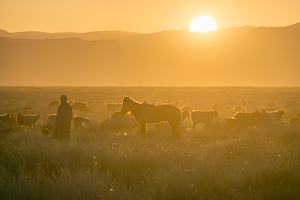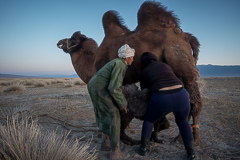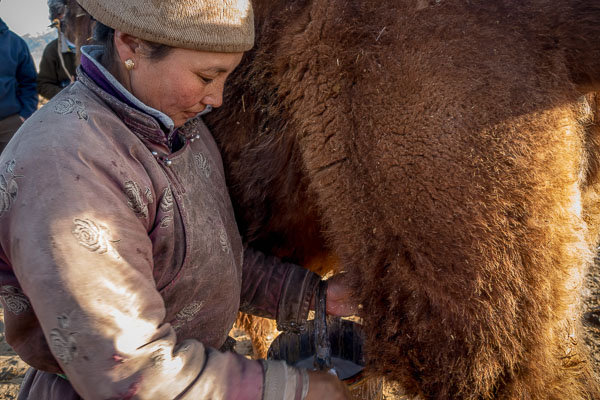A Mongolian Dream

The Start of Every Day
Because of our jobs and connections, I have had the good fortune to see more of Mongolia than most life-long Mongolians. I am learning by seeing what many modern urban Mongolians only learn by reading, or by listening to their parents and their grandparents. To be sure, there is a lot I am not catching because culturally, I am not prepared to capture it even when it lands in my lap.
Several weeks ago in a conversation with teachers from the School of Design at the State University of Science and Technology I listened to a discussion on what Mongolian design is, and how it might be described to an outsider like me. They struggled to explain it in a way I could understand, so I offered an example I've noticed, one of several details of ger construction that are elegant, simple, and make use of material at hand. The looks they gave each other told me right away that no, that is not what they are talking about.
They tried again, explained that at the heart of every Mongolian, whether they live in the city or the country, is a desire to be nomadic; that that desire influences everything they do; that there are so many problems in the city that many consider giving up their lives there to return to the countryside and raise animals; that there is a proposal floating around calling for the government to reduce expenditures to most aimags in favor of concentrating development in the triangle between Ulaanbaatar, Darkhan, and Erdenet, where city dwellers will be encouraged to re-settle when they leave for the country. My face must have given away my surprise and the fact that clearly I am not Mongolian enough to imagine this. With chalk on the board they tried to sketch it out to help me, but it is not the geography that caused my confusion. It was the idea of thousands of city people escaping their problems in Ulaanbaatar to a life of unrelenting manual labor, enormous risk, and the need for specialized knowledge that isn't learned in the city.
°°°°°
Weeks earlier, Judy had just returned with our air tickets to Khovd when my phone rang, a call from our friend Davaa, who speaks no English but who regularly reads our minds. "When will you come to Khovd?" she asked. As best as I could, I let her know that at the end of 3-month, we Khovd to go will. Squeals and laughing came from the phone. Then a succession of other questions, each a little shorter than the previous (to which I repeatedly answered medegui, I don't understand) until finally she asked "Temee oo?" "Camels?"
Temee, teem—Camels, yes, I told her. We would like to go to see her family's camels.
So last week, after staying in her son's ger for the night, we traveled to her family's land near Zereg Bag, two hours southwest of Khovd by brand-new black road, then another forty-five minutes out into the scrubby flat land at the base of Jargalant Uul. Over the next few days we ate with several families there, and spent two nights in the ger belonging to Davaa's uncle, Zamdankhuu, and his wife Baigal. (Their son Miigaa found another place to sleep, with other relatives or possibly in the meat house.)

Trying to Save An Injured Calf
Before dawn, in the perfect weather we enjoyed on our three day visit, I could imagine for a moment being able to get used to this life, but in the clear light of day there were reminders of the certain disappointment that must punctuate the unrelenting routine. A horse's severed head discarded beside a path, a stack of still frozen sheep and goats that didn't make it through an unremarkable winter. A newborn camel unable to stand, probably from damage to its neck during birth.
Herders are cut from very tough cloth. Although she lives in Khovd, Davaa becomes even more alive when she visits the country, and dives into each and every chore with enthusiasm. Perhaps all Mongolians know how to be herders, but living in apartments, driving heated cars, and taking weekends off would probably make a refresher course useful before modern urban residents try to rely on the nomadic life themselves.
